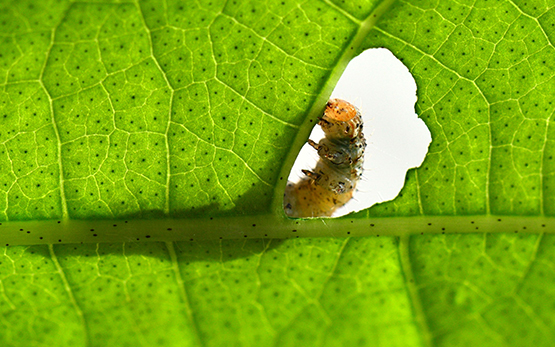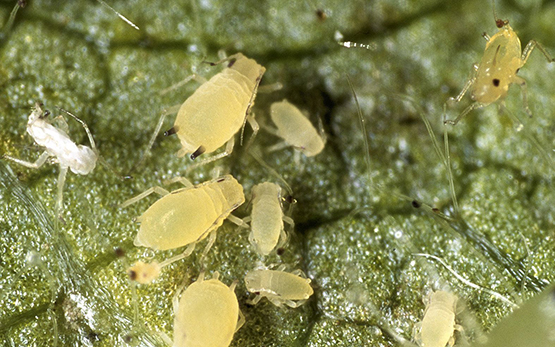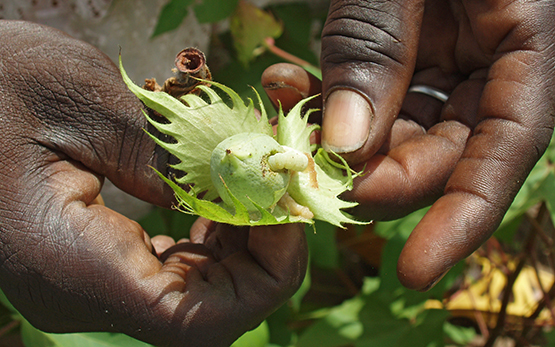
Plants have evolved to react to insect attacks. We investigate how genetically engineered insect resistance interacts with the plant’s natural defence system.
A major fibre crop, cotton (Gossypium spp.) is grown on 33 million hectares worldwide. Since the cotton plant is attacked by numerous insect pests, it possesses an arsenal of morphological and chemical defence mechanisms.
Although the basic cotton defence reactions to primary pests such as caterpillars have been relatively well studied, the same cannot be said for defence mechanisms against other pests, or for the detailed spatial and temporal induction of defence compounds as a response to damage from herbivores.

Over 80% of the cotton cultivated worldwide is genetically modified. Bt cotton produces certain proteins from the bacterium Bacillus thuringiensis which are toxic to the main pests of cotton belonging to the order of Lepidoptera (moth and butterfly species). The high efficacy of Bt cotton has led to a massive suppression of key cotton pests and to a reduction in the use of broad-spectrum insecticides on cotton fields. Lately, however, increased populations of secondary pests which are not affected by the Bt proteins have been observed in Bt cotton fields.
There is evidence that an interaction between natural and genetically modified plant defence mechanisms might actually contribute to the increasing abundance of these secondary pests.

We explore the patterns of the natural cotton defence induction as well as the potential interactions of these natural systems with genetically modified plant defence, thereby contributing to a better understanding of the cotton agroecosystem. This is essential for the development of new, more effective, more sustainable pest-management strategies in integrated plant production.
Contact
Partner
Financial support





